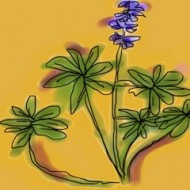Boxall back on the beat
Southern California has had a series of dry years in good water reporting. Far and away the best journalist on the beat, the Los Angeles Times’ Pulitzer-prize winning Bettina Boxall, appears to have been be largely sidelined from day-to-day news gathering while on a “project” — rumor has it that it’s a big read on water. But when Boxall deigns to break from what the Times calls “literary journalism” to do a daily story, pay attention. Something important has spurred her into action. This is the case today as she takes the mainstream media into reporting that the best of the water blogs* have been doing for some time, ie: Testing claims by Senator Dianne Feinstein and Congressman Jim Costa that federal protections for endangered fish in the Sacramento-San Joaquin River Delta are behind an employment/food production catastrophe in the Central Valley.
“In Fresno County, the state’s top-producing …
Suggestion for the senator
The Los Angeles Times is the latest newspaper with advice for the senior senator from California. This comes from today’s editorial on Dianne Feinstein’s announcement that she intends to add a rider to a jobs bill to quadruple water deliveries to corporate farmers on the west side of the Central Valley though it would almost certainly be a death blow to the state’s crippled salmon fishery: “Feinstein says she’s still working on the language of her rider and is open to alternative suggestions. Here’s ours: Stop interfering with the state’s delicate water talks and withdraw this destructive amendment.” To keep reading, click here.
For background on the senator’s move, click here and for an informed look at the supposed “precedent” for the proposed rider, here.…
The Dry Garden: Meet the natives
It’s only February, but bestirred by rain and gathering days, California lilacs are blooming, manzanitas are bedecked with bells and irises are pent up for a March explosion. It doesn’t just feel like spring, it is spring in Southern California. So, if you are considering a dry garden for your home, now is the time to meet the natives. This is the moment to go to Rancho Santa Ana Botanic Garden in Claremont. Click here to keep reading The Dry Garden in the Los Angeles Times.
For listings of courses, hikes, plant sales and projects for Southern Californian dry gardeners, click here for a February calendar, and here for a March one.
…
The Dry Garden: Grand illusion
In his 1982 autobiography “My Last Breath,” film director Luis Buñuel wrote:
A year can go by, even two, without so much as a single cloud in the impassive sky. Whenever an adventuresome cumulus wandered into view just above the mountain peaks, all the clerks in the grocery next door would rush to our house and clamber up onto the roof. There, from the vantage point of a small gable, they’d spend hours watching the creeping cloud, shaking their heads and murmuring sadly: “Wind’s from the south. It’ll never get here.”
And they were always right.
May a Los Angeles filmmaker one day match the elegance with which the Spanish-born Buñuel exaggerated the dryness of his native Aragon. Annual rainfall there is much like ours: 12 to 15 inches a year.
But when it comes to exaggeration here, our tendency is to overstate the rain. Ever notice how much it …
The Dry Garden: Native mallows
Few plants better connote the sheer luxuriance of the California dream as hibiscus. It comes from a clan of plants known as mallows native to the tropics, where, University of Texas botanist Paul A. Fryxell says, this family finds its “greatest richness.”
Fryxell is an authority on mallows, a family that he says has more than 100 genera with cousins around the world, capable of tolerating situations as diverse as the high climes of the Andes, hot and dry Palm Desert and the mediterranean climate of coastal California.
Talk to Fryxell and it soon becomes clear why hibiscuses in Southern California needn’t be a guilty pleasure, even though they’re tropical. Thanks to their robust root systems, many can go with only occasional deep watering during dry season. Once established, they are happiest when treated like trees.
For Californians, he also points to our native mallows. Those who haven’t expanded from …
« go back — keep looking »

